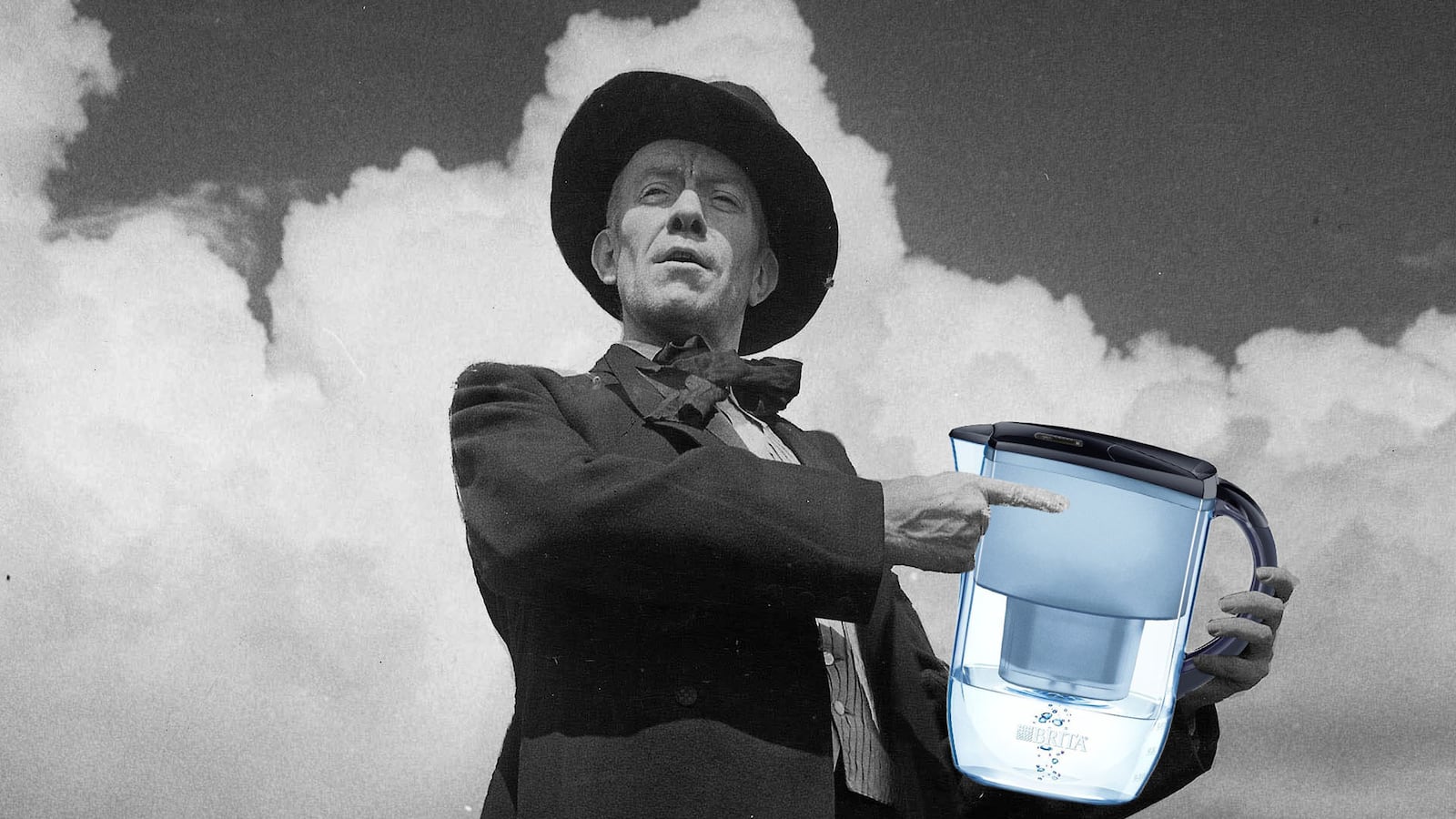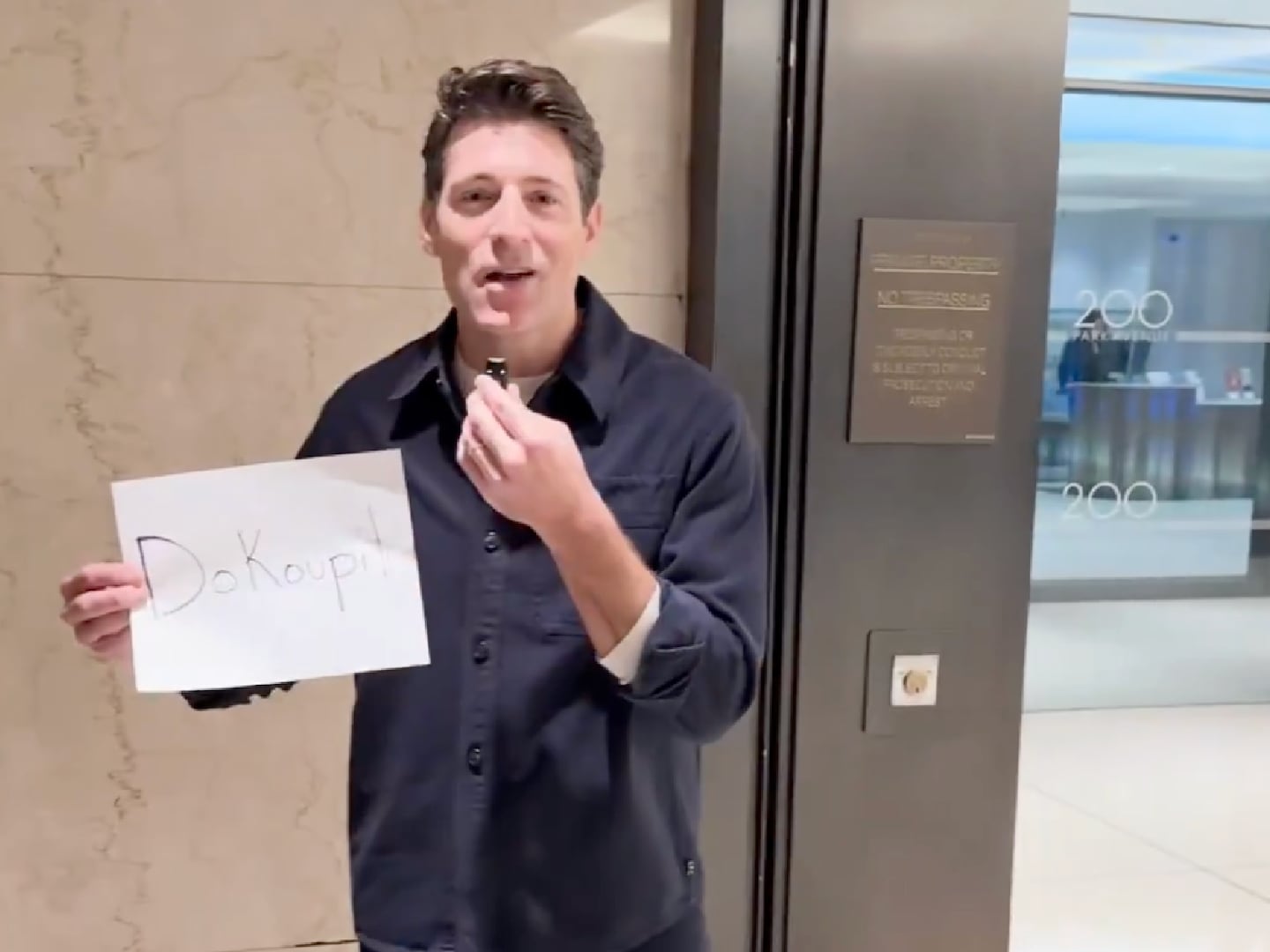Earlier this month, Toledo, Ohio, watched its municipal water supply descend into an undrinkable stew of algal toxins. It’s amazing, really, that events like this are so rare. Since human beings started gathering in settlements millennia ago, providing decent water to urban populations has been a huge challenge, often solved in ways that quench thirst but kill children. With some noteworthy exceptions, city people have been drinking really, really gross water for centuries.
Fortunately, our society has developed the most sophisticated, reliable, and sanitary solution to this challenge in the history of civilization. What’s the last time that someone you know contracted cholera in the United States? Suffered from arsenic poisoning from bad groundwater? Came down with a touch of typhoid? In a typical town, water is strained, settled, filtered, treated, and then pushed through a network of pipes more elaborate than a cat’s cradle. The whole process is carefully monitored. It can serve populations that number in the millions. And it all costs less than a penny per gallon. Rome’s aqueduct builders, deep in their crypts, are rolling with envy.
Meanwhile, despite all of this municipal muscle, millions of Americans take their elaborately treated and filtered water, and then filter it again. Grocery stores have entire sections devoted to Brita, Pūr, Mavea, and other products that promise to clean your clean water. Rome’s aqueduct builders, deep in their crypts, are totally confused.
Here’s the situation: Some people claim to be bothered by the taste of chlorine and other substances in their water. Others are worried that the water isn’t safe. Filters, the marketing pitches go, make for tastier, safer, healthier water.
The situation gets thornier once you start to ask certain questions: How many people can actually notice any difference between filtered water and tap water? Is filtered water that much cleaner and safer than tap water? What does it mean for something to be safe, anyway? In other words: Are water filters a complete waste? It depends. Your answer to this question probably has to do with the sensitivity of your taste buds and, above all, the way in which you conceptualize safety.
So, what do these filters do? Basically, they run water through substances, such as activated charcoal, that pluck certain chemicals out of the water—stuff like metals and chlorine residues (but not, incidentally, the Toledo toxins, against which Brita and its ilk are useless, according to regional news outlets).
Last week, I purchased a standard Brita pitcher filter, just to try it out. According to the box, the filter will provide me with better-tasting water. It will give me healthier water. And it’s good for the environment, because it reduces waste. Let’s evaluate those claims in turn.
Does the Brita-ed stuff better taste than tap water? It’s not clear. In a blind, temperature-controlled, multi-stage taste test, I checked if half a dozen friends of mine could consistently distinguish between tap water from a kitchen sink in Durham, N.C., and water that had passed through my new Brita. None of them could. Typical reactions included “I didn’t notice any difference” and “It just tasted like water.” These results, of course, are subjective and totally unscientific. But for me, they didn’t exactly inspire confidence in the filter’s ability to transform that watery flavor.
Is filtered water healthier? That depends on what’s in your tap water to begin with. Unlike municipal water, personal filters aren’t subject to any government oversight or regulation, but the independent, nonprofit NSF International provides certification and standards for many filters on the market.
I combed through my filter’s NSF testing results, which were included in the box. Baffled by the jargon-heavy consumer information manual, I chatted with Cheryl Luptowski from the NSF consumer affairs office. The particular Brita filter I bought, it turns out, is not certified to deal with lead, pesticide residues, pharmaceutical residues, bacteria, viruses, or anything health-related other than mercury, copper, and cadmium. That’s it: three metals. Are these elements present in my water at dangerous levels? I have no idea.
In the fine print, Brita recommends getting your water tested before you purchase a filter. Luptowski concurred, pointing out the obvious: You can’t intelligently purchase a filter unless you figure out what, if anything, is wrong with your water. Somehow, though, I doubt that consumers rush out of the grocery store filter aisle and straight to the testing authorities.
Some Brita models can deal with certain toxins, such as lead, that can come from outdated pipes. But when I brought this issue up with Raymond Letterman, professor emeritus of civil engineering at Syracuse University and an expert on large-scale water treatment systems, he suggested that you might want a more serious intervention than store-bought filters if your pipes are actually leaching lead.
Meanwhile, filters can actually add bacteria to your water. Sure, water filter makers put a bit of bactericide in their products to tamp down the infestation. It just doesn’t always work, according to Letterman. “Unless you have a chemical disinfectant in the water, like chlorine, you’ll always get some bacterial growth, a biofilm, on filter surfaces. It’s just inevitable,” he said.
One study of bactericide-impregnated Brita filters, conducted in Germany, found that filtered water usually contained more bacteria than tap water—sometimes much more. Many of those bacteria were virulent. The researchers even recommended that people with compromised immune systems boil their Brita water. In the 1990s, the Canadian government briefly considered banning such filters until further research on bacterial growth had taken place.
So, is my filter saving the environment, at least? Well, just a hint: it’s plastic, it’s disposable, and it’s made with charcoal. Undeterred, Brita’s argues that, by using a filter, you save all the waste from those plastic water bottles that you would have to use instead. Yes, really, that’s the entire claim: Brita water versus bottled water, as if there’s no eco-alternative, such as the EPA-regulated stuff that comes from a tap. One suspects that Brita—which is owned by the chemical giant Clorox—has invented a problem in order to solve it. Still, the strategy seems to be working: As a Harvard Business Review article argued in 2010, an eco-friendly image has been central to Brita’s growth after a slump in the mid-2000s.
In short, my $18-plus-cost-of-replacement-filters Brita water system may not live up to the hype. That’s not to say that there aren’t good reasons to buy one, though. If the taste of chlorine haunts you, filters might help out. If you want to soften your water, or you know that your local water authority is flagrantly flouting federal standards, some filters could be useful. (Just be sure to use filtered water when you make pasta, rice, soup, oatmeal, tea, coffee, ramen, and ice, as well as when you drink the water straight).
For most consumers, though, what’s at issue probably isn’t a matter of taste or toxins. Instead, it’s a question of two competing notions of safety.
Under the first notion, safety means eliminating risk. As this way of thinking goes, even if your odds of dying from tap water are extremely, extremely low (and they are), if there’s any way to reduce those odds even further, you’d be a fool not to try it. After all, the more you filter out, the safer you’ll get.
The second notion suggests that, because fully eliminating risk is impossible, and because gauging risk is so difficult, safety is really a matter of managing risk to a reasonable degree, not trying to eliminate them altogether. “Safe and risk-free are different things,” said James Salzman, a Duke University law professor and the author of Drinking Water: A History. By Salzman’s reckoning, drinking water is safe—it almost certainly won’t hurt you—but it’s not entirely risk-free.
But is it really worth eliminating that final shred of danger? This is a distinctly modern, First World question. Speaking generally, Salzman explained that a truly risk-free system just isn’t worth the effort. “It just takes so many resources, so you don’t have anything left for anything else,” he said. After all, there are much larger risks in this world than traces of copper in your water.
That first notion of safety, though, has its adherents. And they’re easy targets for marketers. Brita’s marketing takes on a municipal water system that is, by world standards, remarkably safe, and suggests that it could be even safer. Similarly, organic and natural foods can draw on that inchoate sense of threat, drawing on our desire to eliminate risk whenever possible, and whatever the cost. Simply put, safety is good business. From a strict cost-benefit analysis, Brita may not be a great deal for most of its customers. But it certainly has something to sell: a sense of security and a particular vision of purity. And for many people, maybe, that’s worth the cash.
When I was growing up, my family used a Brita pitcher. I recently asked my mother why they had bothered to buy one, because I’ve never heard either of my parents express concerns about tap water’s taste or safety. Also, we always forgot to change the filter, so it wasn’t doing anything half the time, anyway.
Basically, my mother said with a touch of embarrassment, everyone else seemed to have a filter, so they bought one, too. My mother described first seeing a Brita pitcher in a friend’s kitchen in Portland, Oregon. “It made me more interested in water,” she explained. Sitting in that plastic pitcher, she said, the water seemed to sparkle.






